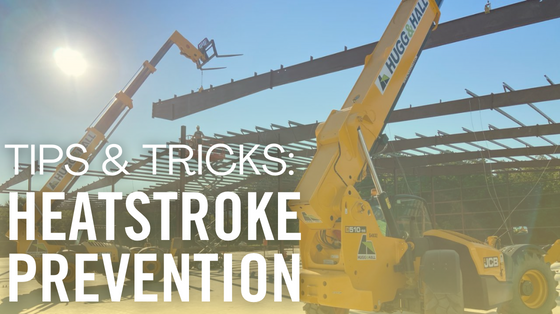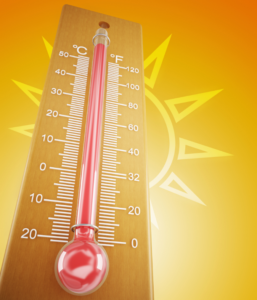
Heatstroke Prevention
 Do you know what to do if someone gets heatstroke? While we’ve had a brief break from the heat, temperatures are rising once again. Here are some signs you need to look out for and tips on how to combat it.
Do you know what to do if someone gets heatstroke? While we’ve had a brief break from the heat, temperatures are rising once again. Here are some signs you need to look out for and tips on how to combat it.
What are the causes?
The possibility of heatstroke is dependent on the heat index. The heat index is dependent on heat and humidity.
We enter the “danger zone” for sunstroke at a heat index of 90 degrees F, and the possibility for heatstroke occurs at any heat index above 105 degrees.
However, humidity makes it much harder to avoid heatstroke.
How does humidity impact the body?
High humidity means your body can’t cool itself off by sweating. You’ll continue to sweat and lose water & electrolytes, but your body doesn’t benefit from it anymore.
At 100% humidity, you lose the ability to cool yourself through sweating at 87 degrees F.
When it’s humid, you need to be extra careful of heatstroke and take additional breaks in an air-conditioned area or vehicle.
How can I prevent heatstroke?
There are other risk factors for heatstroke beyond just the temperature. These can include the presence of external heat sources, workload or physical activity, and the use of PPE or protective gear. Reduce the possibility of heatstroke by following these steps.
- Slow down and limit strenuous activities, or reschedule them to the coolest time of the day
- Dress for summer: lightweight, light-colored clothing reflects heat and sunlight
- Drink plenty of water or non-alcoholic fluids, even if you don’t feel thirsty
- Spend as much time as possible in air-conditioned environments
- Avoid sunburn: sunburn makes it harder for your body to dissipate heat
What are the symptoms?
It’s important to learn the symptoms of sunstroke and heatstroke. These can include:
- Confused, blurred speech
- Dizziness
- Painful muscle spasms
- Nausea and vomiting
- Red, hot, dry skin (heatstroke)
- Heavy sweating (sunstroke)
- Body temperature of 104 degrees or higher (heatstroke)
- Rapid breathing or fast heart rate
- Seizures
- Loss of consciousness
What should I do if someone has heatstroke?
If you suspect someone is a victim of heatstroke, don’t panic. Call 911 and stay with the person until medical help arrives.
- Move the person to a shady, cooler area
- Remove the person’s outer clothing
 Cool quickly with cold water by placing cold, wet towels or clothes on the person’s skin, especially on the head, neck, armpits, and groin
Cool quickly with cold water by placing cold, wet towels or clothes on the person’s skin, especially on the head, neck, armpits, and groin- Fan the air around the person and move them to an air-conditioned environment if possible
- Encourage the person to drink slightly salted fluids (such as sports drinks) if possible
Need to keep your area cool? We can help! Contact our Utility Services Department for all your portable AC needs.
For more information, visit the National Weather Service or the Occupational Safety and Health Administration (OSHA).
Prepare your equipment, jobsites, and employees for warmer temperatures to help avoid injuries and downtime from work. Visit our blog to learn more summer safety tips!
Editor’s Note: This post was originally published in August 2022. We updated it for freshness, accuracy, and comprehensiveness in June 2025.
Back to News
Subscribe and unlock cutting-edge equipment insights, trends and tips!
Subscribe